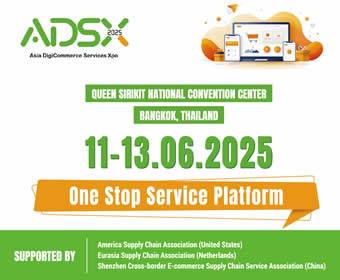The Liftoff 2019 Mobile Shopping App Report breaks down the ‘mobile window shopping’ trend; suggesting more browsing is now done on phones and users now want more engagement with retailers
Liftoff, the leading mobile app marketing and retargeting platform, today released its third annual report on the growing market of mobile app commerce; conducted in partnership with Adjust, the industry-leading firm in mobile measurement and fraud prevention.
The study, pulling from the most extensive dataset to-date, shows that shopping app users are becoming increasingly purchase-happy in what is poised to be mobile commerce’s biggest year so far. The report uncovers key insights into Asia-Pacific (APAC) mobile shopping behaviour, suggesting the rise of “Mobile Window Shopping” in the region, which is underpinned by the low costs of installing shopping apps and acquiring new users. Analyzing more than 90.9 billion ad impressions across four regions (Asia-Pacific; North America; Latin America; and Europe, the Middle East and Africa), 13.6 million installs and 3.9 million registration and purchase events between April 2018 and April 2019, the report found the following trends in the APAC region:
Retail app browsing – the new form of window shopping?
In APAC, users are clearly open to exploring retail apps, with registration rates skyrocketing and acquisition costs dropping year-over-year. But the data points to a surprising new trend — “Mobile Window Shopping.” While users install and register in retail apps with ease, the joint report shows a sizeable drop-off at the all-important purchase stage: APAC’s cost-per-first-purchase comes in at US$31.26 (up 13.3% year-over-year), coupled with a low 10.1% conversion rate.
The driving force of this drop-off is uncertain, but it could point to a larger retail trend: the demand for a more user-friendly shopping experience. While price tends to dominate purchasing decisions, factors such as having personal engagements with retailers and concerns on whether the retailers can capably fulfill orders are also seen as crucial by mobile shoppers.
“For marketers looking to boost purchase rates, the key is to utilize the data they have, understand potential drop-off points and to segment and target properly,” commented Christian Henschel, Co-founder and CEO at Adjust. “Brands can then create and deliver the perfect user interaction strategies for their marketing initiatives. This personalization is key to winning over fickle consumers and building long-term loyalty.”
To drive up purchasing rates, savvy marketers can integrate shopping apps into a larger marketing strategy; offering exclusive deals via apps such as offering limited-time specials to encourage in-app purchases. Also, they should coordinate with retailers’ fulfillment and logistics teams to ensure that the products that shoppers put into their cart are available and can be delivered on time.
Indonesia – providing marketers a wealth of user acquisition opportunities
Narrowing down the Asian focus to Southeast Asia, the region’s largest country – Indonesia – presents a dynamic landscape for marketers operating in APAC; especially in terms of the number of users that can be acquired. However, turning those acquisitions into actual purchases will likely depend on how convenient the mobile app shopping experience is.
Liftoff’s research shows that, due to the country’s rapid internet expansion and online commerce growth, Indonesia is a highly attractive market for user acquisition and action. The cost of an application installment is US$1.65, which in comparison the lowest among all the other five countries profiled in the report (Indonesia, Germany, Japan, the U.K. and the U.S.) while the cost of acquiring a user making a first purchase stands at a mere US$16.69.
However, these low costs are also paired with somewhat meagre conversion rates. For example: at 9.9%, the install-to-purchase rate is aligned with the underperforming 10.1% rate recorded across APAC in general.
Additionally, the Liftoff report found that Indonesia’s e-commerce users are generally slow starters; they take approximately 1 day, 19 hours and 31 minutes from installing the application to actioning a purchase. Nevertheless, Liftoff predicts that this trend is likely to change in the coming times, as local commerce apps such as Go-Jek may make mobile purchases and payments more common and popular.
Another concern for marketers and retailers is that retention rates of shopping apps in Indonesia trail behind other markets studied in the region. According to the Liftoff report, shopping apps in Indonesia have a lower customer retention rate when compared to other markets in the APAC region, beginning at 11% on Day 1 and dropping to nearly 4% by Day 7. The prime reasons behind this drop are consumers having a low learning curve, lack of patience with the app onboarding process and failing to understand the long-term value of installing an app.
“The shopping app market in Asia is growing dynamically and at an all-time-high, yet based on our findings, the number of purchases made through such apps are not as high as they could be; despite the general trend of consumers moving their browsing from store windows to the phones’ screens,” said Dennis Mink, Vice President Marketing at Liftoff. “Indonesia is a microcosm of the behaviors and concerns of the region’s shoppers. So, finding the right message and conveying it in the right context to the consumer can help remove these roadblocks, thereby improving retention and interest.”
























